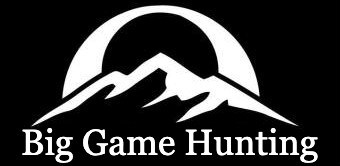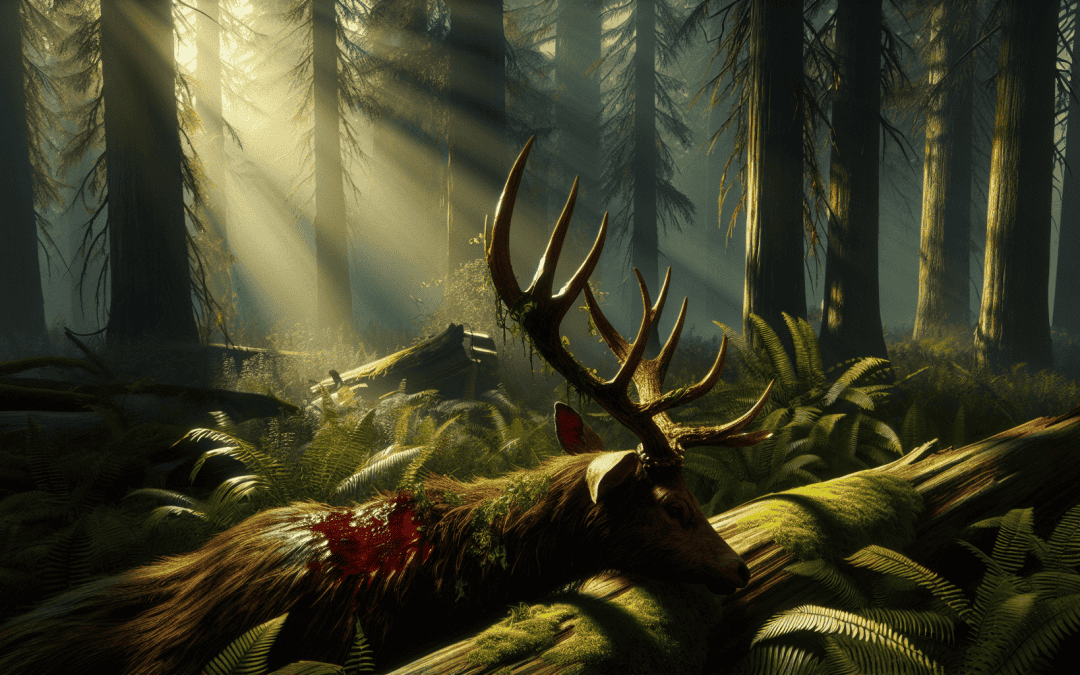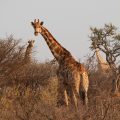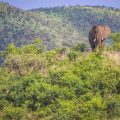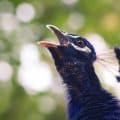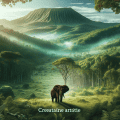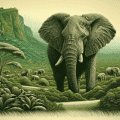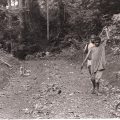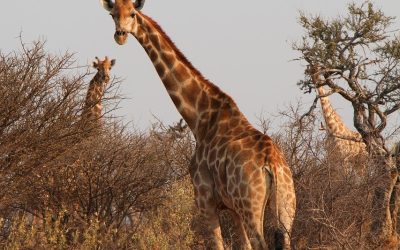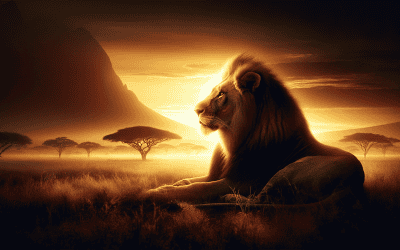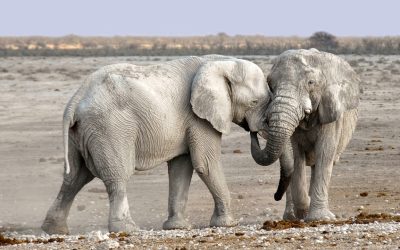Imagine yourself in the vast and untouched Gwaai Forest Area, surrounded by towering trees and an air of adventure. As you set foot into this natural paradise, your heart races with anticipation. The thrill of the hunt fills your senses as you navigate through the dense vegetation, with glimpses of elusive wildlife teasing your pursuit. From the echoes of your footsteps to the serenade of chirping birds, every sound becomes a clue that leads you closer to your ultimate goal. Join us as we embark on an unforgettable journey into the heart of Gwaai Forest Area, where nature’s beauty intertwines with the challenges and rewards of the hunt.
Location and Description of Gwaai Forest Area
Geographical location
Gwaai Forest Area is located in the northern region of British Columbia, Canada. Situated in the heart of the Gwaai Provincial Park and Protected Area, the forest covers an expansive area of pristine wilderness. Surrounded by towering mountains, dense vegetation, and crystal-clear lakes, this remote location offers a true escape into nature.
Physical features
The Gwaai Forest Area boasts a diverse range of physical features that make it a prime hunting destination. The forest is characterized by its lush greenery, which includes old-growth trees, such as western red cedar and Sitka spruce, creating a dense canopy that filters sunlight and provides exceptional habitat for wildlife. In addition, the area is crisscrossed by numerous rivers and streams, adding to its natural beauty and providing water sources for the local fauna.
Flora and fauna
The Gwaai Forest Area is rich in biodiversity, making it a haven for numerous plant and animal species. The forest is home to a wide variety of flora, including ferns, mosses, wildflowers, and towering coniferous trees. This diverse vegetation supports a thriving ecosystem, attracting an abundance of wildlife.
When it comes to fauna, the Gwaai Forest Area offers a range of game species that hunters can pursue. This includes black bear, moose, deer, elk, and mountain goat. The forest is also home to various small game, such as grouse and rabbits, providing opportunities for both novice and experienced hunters.
Regulations and Permits for Hunting
Overview of hunting regulations
Before embarking on any hunting expedition in the Gwaai Forest Area, it is important to familiarize yourself with the hunting regulations set forth by the local authorities. These regulations are in place to ensure the sustainability of the ecosystem and the safety of both hunters and wildlife. It is crucial to abide by these rules and regulations to maintain the delicate balance of nature.
Types of permits required
To hunt legally in the Gwaai Forest Area, hunters are required to obtain specific permits. These permits vary depending on the type of game being pursued and may include licenses for big game, small game, or migratory birds. It is essential to research and understand the specific permits required for your desired hunting activities to ensure compliance with the law.
Applying for hunting permits
To apply for hunting permits in the Gwaai Forest Area, hunters must follow a designated application process. This typically involves submitting an application to the local wildlife management authority, providing relevant personal information, and paying the necessary fees. It is advisable to apply well in advance of the hunting season to increase the chances of securing the desired permits.
Restrictions and limitations
While hunting is permitted in the Gwaai Forest Area, it is important to note that there are certain restrictions and limitations in place to protect both the ecosystem and the local wildlife. These may include restrictions on the use of specific hunting methods, limitations on bag limits, and designated hunting seasons. It is crucial to familiarize yourself with these restrictions and comply with them to ensure responsible and sustainable hunting practices.
Hunting Seasons and Species
Seasonal hunting restrictions
Hunting seasons in the Gwaai Forest Area are carefully regulated to ensure the conservation of wildlife populations and to optimize hunting opportunities. Each game species has its own designated hunting season, which may vary depending on factors such as population size, breeding patterns, and migration patterns. It is crucial for hunters to consult the local wildlife management authority to determine the specific hunting seasons for the desired game species.
List of game species
The Gwaai Forest Area offers a diverse range of game species that hunters can pursue. Some of the popular game species in the area include black bear, moose, deer, elk, and mountain goat. Additionally, there are opportunities to hunt smaller game species such as grouse and rabbits. The presence of such varied game species ensures that hunters of all preferences and skill levels can find suitable targets to pursue.
Protected species
It is important for hunters to be aware of the presence of certain protected species in the Gwaai Forest Area. These species are off-limits for hunting and are actively conserved to maintain their populations. Examples of protected species may include endangered or threatened animals such as the bald eagle or specific migratory bird species. Hunters must exercise caution and familiarize themselves with the list of protected species to avoid any unintentional hunting violations.
Bag limits
Bag limits refer to the maximum number of animals, or game bags, that a hunter is allowed to harvest within a specific timeframe. These limits are established for each game species to prevent overharvesting and to maintain healthy wildlife populations. Bag limits may vary depending on factors such as species population, habitat health, and conservation efforts. It is crucial for hunters to adhere to bag limits and properly report their harvest to contribute to sustainable hunting practices.
Hunting Methods and Techniques
Firearms
Firearms are a popular choice among hunters in the Gwaai Forest Area due to their range and accuracy. Bolt-action rifles chambered in calibers suitable for the desired game species are commonly used. It is essential to ensure that firearms are properly maintained, sighted-in, and in compliance with local regulations. Safety precautions, such as using trigger locks and storing firearms in a secure manner, must also be observed at all times.
Bowhunting
Bowhunting provides a unique and challenging experience for hunters in the Gwaai Forest Area. With its emphasis on stealth and accuracy, bowhunting requires hunters to get in close proximity to their quarry. Hunters must select appropriate bow and arrow combinations, ensuring sufficient draw weight and arrow speed to cleanly take down the desired game. Mastery of stealth and understanding of animal behavior are critical for success in bowhunting.
Tracking and stalking
Tracking and stalking techniques are commonly employed by hunters in the Gwaai Forest Area to close the distance on their target game species. Tracking involves identifying and following animal tracks, scat, and other signs to determine the animal’s direction and habits. Stalking requires the hunter to move silently and undetected to position themselves within range for a shot. A thorough understanding of animal behavior and careful observation skills are essential for effective tracking and stalking.
Calling and decoying
Calling and decoying techniques are often utilized by hunters to attract game species in the Gwaai Forest Area. By imitating the vocalizations and behaviors of the desired game, hunters can entice animals into close range for a shot opportunity. This can include using game-specific calls, such as elk bugles or moose grunts, to create a realistic and enticing scenario. Care must be taken to ensure that calling and decoying methods comply with hunting regulations and ethical considerations.
Guided Hunting Tours and Outfitters
Benefits of guided tours
For hunters looking to maximize their chances of a successful and enjoyable hunting experience in the Gwaai Forest Area, guided tours offer numerous benefits. Guided tours are led by experienced professionals who possess extensive knowledge of the area and its wildlife. They can provide valuable insights into the local game species, hunting techniques, and regulations. Additionally, they often handle logistics such as accommodations, transportation, and field dressing, allowing hunters to focus on the hunt itself.
Experienced outfitters in the area
There are several reputable outfitters operating in the Gwaai Forest Area, offering guided hunting tours that cater to various preferences and budgets. These outfitters employ knowledgeable guides who have intimate knowledge of the terrain and the behavior patterns of game species. Some well-established outfitters in the area include Gwaai River Outfitters, Wilderness Adventures, and Gwaai Forest Expeditions. It is advisable to research and select an outfitter that aligns with your specific hunting goals and requirements.
Services provided by outfitters
Outfitters in the Gwaai Forest Area typically offer a range of services to enhance the hunting experience. These services may include transportation to and from hunting areas, accommodations in comfortable lodges or campsites, meals, and field dressing assistance. Additionally, outfitters may provide access to specialized hunting equipment, such as high-quality optics and firearms. By availing the services of a professional outfitter, hunters can ensure a well-organized and enjoyable hunting experience.
Costs and packages
The cost of guided hunting tours in the Gwaai Forest Area varies depending on factors such as the duration of the tour, the number of hunters in the group, and the desired level of luxury in accommodations. Generally, guided hunting tours can range from a few thousand dollars to several tens of thousands, with luxury packages commanding higher prices. It is advisable to inquire with outfitters about their pricing structure and packages in order to determine the best fit for your budget and preferences.
Preparation and Equipment for Hunting
Choosing appropriate clothing
When preparing for a hunting expedition in the Gwaai Forest Area, selecting appropriate clothing is crucial. The region experiences varying weather conditions, so layering is key. Start with a moisture-wicking base layer, followed by insulating layers to trap body heat. A waterproof and wind-resistant outer layer is essential for protection against the elements. Additionally, camouflage patterns that blend with the surrounding environment can help to minimize visibility to game species.
Essential hunting gear
Equipping oneself with essential hunting gear is essential for a successful and safe hunt in the Gwaai Forest Area. This includes items such as a high-quality backpack, a reliable hunting knife, a compact first-aid kit, binoculars, and a field dressing kit. Other necessary gear may include a headlamp, a compass or GPS device for navigation, and a survival kit containing essential items in case of emergencies. It is important to carefully consider the specific needs of your hunting expedition and invest in reliable gear.
Recommended firearms and ammunition
The choice of firearm and ammunition depends on the desired game species and personal preferences. For larger game species such as moose and elk, high-caliber rifles with adequate stopping power are recommended. For smaller game species or bowhunting, lighter calibers or specialized archery equipment may be suitable. It is crucial to research and select firearms and ammunition that comply with local regulations and are proven to be effective for ethical and efficient hunting.
Navigational tools
Navigational tools are essential for hunters exploring the Gwaai Forest Area. Reliable tools such as a compass, topographic maps, and GPS devices can help hunters navigate the vast wilderness and avoid getting lost. Familiarize yourself with the area’s landmarks, trails, and boundaries to ensure safe and efficient navigation. Additionally, consider carrying a satellite communication device or a cell phone with a backup power supply for emergencies and to stay connected with the outside world when necessary.
Safety Measures and Precautions
Importance of safety
Safety should always be the top priority when participating in any hunting activity. This applies to hunting in the Gwaai Forest Area as well. By adhering to proper safety measures and precautions, hunters can minimize the risk of accidents, injuries, and potentially dangerous situations. Respecting firearms, following hunting regulations, and being aware of one’s surroundings are fundamental to ensuring a safe and enjoyable hunting experience.
Firearm handling and safety
Proper firearm handling and safety practices are paramount when hunting in the Gwaai Forest Area. It is imperative to treat every firearm as if it is loaded, keeping the muzzle pointed in a safe direction at all times. Finger discipline should be maintained, with the finger kept off the trigger until ready to shoot. Additionally, hunters should establish communication and awareness among their hunting party to prevent any accidental discharges.
Preventing accidents and injuries
To prevent accidents and injuries during a hunting expedition in the Gwaai Forest Area, it is important to take proactive measures. This includes wearing appropriate safety gear, such as hunter orange clothing, to enhance visibility to other hunters. Clear communication with fellow hunters is essential to avoid any misunderstandings or unsafe situations. Checking the condition of tree stands, practicing safe hunting practices when using elevated positions, and being mindful of natural hazards are also important precautions to take.
Emergency procedures
Despite all necessary precautions, emergencies can still occur during a hunting trip in the Gwaai Forest Area. It is crucial to be prepared and familiar with the appropriate emergency procedures. This includes having the necessary knowledge and equipment to handle medical emergencies, such as administering first aid or signaling for help. Establishing a communication plan with fellow hunters and informing trusted individuals of the hunting itinerary can aid in expediting emergency response if needed.
Ethical Considerations in Hunting
Respecting wildlife and ecosystem
Ethical hunting in the Gwaai Forest Area revolves around respecting the local wildlife and the entire ecosystem. This includes adhering to hunting regulations, avoiding wasteful practices, and ensuring that the entire animal is utilized. Treating harvested game with respect and minimizing suffering through ethical shot placement is crucial for maintaining a high standard of hunting ethics. Furthermore, hunters should strive to minimize their impact on the environment, leaving no trace of their presence behind.
Sustainable hunting practices
Sustainable hunting practices are essential for the long-term health and conservation of the Gwaai Forest Area. Hunters should ensure they hunt within the established bag limits, prioritize the harvesting of mature animals, and avoid targeting species with declining populations. Additionally, contributing to conservation efforts by supporting organizations dedicated to preserving the natural habitat and conducting responsible land management practices is an integral part of sustainable hunting.
Proper disposal of remains
Part of ethical hunting involves the proper disposal of animal remains in the Gwaai Forest Area. Leaving remains in the wilderness can attract scavengers and disrupt the natural balance of the ecosystem. Hunters should properly field dress their harvested game away from water sources and dispose of remains in approved areas or by burying them at a sufficient depth. By managing remains responsibly, hunters can contribute to the overall health and cleanliness of the forest.
Conservation efforts
Engaging in conservation efforts is an important aspect of ethical hunting in the Gwaai Forest Area. Hunters should support organizations and initiatives focused on preserving wildlife habitats, conducting research, and implementing sustainable management practices. This can be accomplished through volunteering, participating in wildlife surveys, or contributing financially to conservation projects. By actively participating in conservation efforts, hunters can give back to the environment they enjoy and ensure the sustainability of the Gwaai Forest Area for future generations.
Tips for a Successful Hunt
Scouting and knowledge of the area
Prior to embarking on a hunting expedition in the Gwaai Forest Area, it is highly recommended to conduct thorough scouting and gain knowledge of the area. Scouting involves exploring the terrain, identifying animal tracks and signs, and researching the behavior patterns of game species. Familiarizing yourself with the area’s topography, water sources, and food availability can significantly increase the chances of locating and successfully harvesting your desired game.
Understanding animal behavior
To increase the likelihood of a successful hunt in the Gwaai Forest Area, hunters should strive to understand the behavior patterns of their target game species. This includes learning about their feeding habits, mating seasons, and preferred habitats. By studying their behavior, hunters can predict where animals are likely to be found and adapt their hunting strategies accordingly. Patience, observation, and knowledge of animal behavior are key factors in a successful hunt.
Patience and persistence
Hunting in the Gwaai Forest Area requires patience and persistence. It is essential to understand that not every hunting trip will result in a successful harvest. Weather conditions, animal movement, and other factors can impact the outcome of a hunt. Staying positive, maintaining focus, and being resilient in the face of challenges are crucial attributes for hunters. Remember that hunting is not only about the end result but also about immersing oneself in nature and enjoying the overall experience.
Adapting to weather conditions
The Gwaai Forest Area experiences a range of weather conditions throughout the hunting seasons. From cool and wet conditions in the early fall to frigid temperatures and snow in the winter, hunters must be prepared to adapt. Dressing in layers, wearing appropriate footwear, and bringing essential gear such as rain gear and hand warmers are imperative. Flexibility in hunting strategies and being aware of how weather conditions affect animal behavior can increase the chances of success.
Other Recreational Activities in Gwaai Forest Area
Hiking and nature trails
Aside from hunting, the Gwaai Forest Area offers a plethora of recreational activities for outdoor enthusiasts. Hiking and exploring the numerous nature trails allow visitors to immerse themselves in the breathtaking scenery. The forest is abundant with trails of varying lengths and difficulty levels, catering to both novice and experienced hikers. These trails provide an opportunity to observe the diverse flora and fauna of the area, making it a nature lover’s paradise.
Photography and bird-watching
The Gwaai Forest Area is a haven for photographers and bird-watchers. With its diverse ecosystem, the forest provides countless opportunities to capture striking images of wildlife, landscapes, and unique plant species. Bird enthusiasts can delight in spotting a variety of avian species, both resident and migratory, such as bald eagles, peregrine falcons, and various songbirds. Whether capturing moments on camera or simply appreciating the beauty of the natural world, photography and bird-watching are rewarding activities in this scenic destination.
Camping and outdoor adventures
For those seeking immersive outdoor experiences, camping in the Gwaai Forest Area is a must. Numerous campsites are available, offering opportunities to spend peaceful nights under a starlit sky. Camping allows visitors to fully embrace the wilderness, disconnect from the hustle and bustle of daily life, and connect with nature. In addition to camping, outdoor enthusiasts can indulge in activities such as canoeing, kayaking, or fishing in the pristine lakes and rivers that meander through the forest.
Cultural and historical sites
The Gwaai Forest Area is not only rich in natural beauty but also steeped in cultural and historical significance. Indigenous peoples have inhabited the region for thousands of years, leaving behind traces of their rich heritage. Visitors can explore ancient petroglyphs, abandoned settlements, and cultural landmarks to gain insight into the area’s indigenous history. Respectful appreciation and understanding of the cultural and historical sites within the Gwaai Forest Area further enhance the overall experience of this remarkable destination.
In conclusion, the Gwaai Forest Area is a treasure trove of natural wonders, offering hunters and outdoor enthusiasts a diverse range of experiences. With its breathtaking scenery, abundant wildlife, and engaging recreational activities, this remote wilderness is a true paradise for those seeking an immersive and unforgettable adventure. Whether embarking on a hunting expedition, exploring the trails, or simply reveling in the serenity of nature, the Gwaai Forest Area has something to offer to every nature enthusiast. Remember to always adhere to hunting regulations, practice ethical hunting practices, and prioritize safety to ensure the preservation and enjoyment of this remarkable ecosystem for generations to come.
